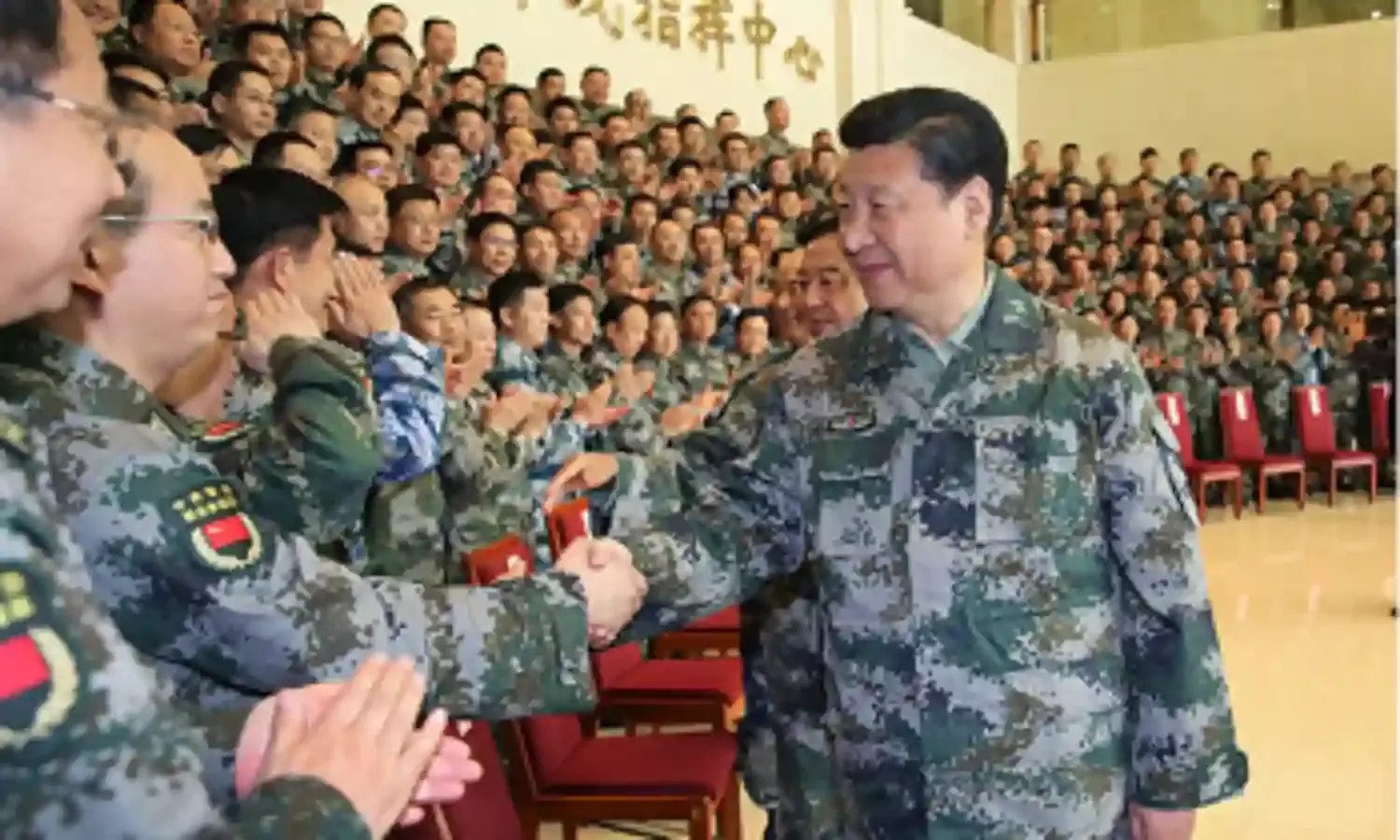President Xi Jinping and the People’s Liberation Army
The Citizen Foreign Affairs Backgrounder;

President and Chairman of China’s Central Military Commission, Xi has repeatedly stressed the Communist party’s absolute control of the armed forces. Since taking office he has initiated reforms designed to modernise the armed forces by 2035 and build the People's Liberation Army into a world-class force by 2050.
The PLA is to be transformed into a leaner fighting force with improved joint operations capability and to this end a reshuffle of the army’s structure has been carried out.
Centered around a new, condensed structure of 84 military units, the reshuffle built on Xi’s years-long efforts to modernize the PLA with greater emphasis on new capabilities including cyberspace, electronic and information warfare.
All 84 new units are to be at combined-corps level, which means commanders can hold the rank of major-general or rear-admiral. Unit members would be regrouped from existing forces given that the Chinese military is still engaged in cutting its troops by 300,000, one of the wide-ranging military reforms introduced by Xi in late 2015.
Those reforms include establishing a joint operational command structure by 2020 and rejigging existing military regions, as well as streamlining troop numbers particularly in non-combat facing roles. The previous seven military area commands have been regrouped into five, and the four military departments - staff, politics, logistics and armaments - reorganized into 15 agencies. The 84 units would come under the 15 agencies.
Xi has also made rooting out deeply entrenched corruption in the military a top priority. Dozens of senior officers have been investigated and jailed. The PLA’s reforms are aimed at streamlining units with overlapping functions and re-organizing components into a force with integrated joint operations capabilities.
The integration of units has gradually shown its impact, which can be seen in the PLA’s extension of reach beyond borders. The transformation of the former army-centric seven military regions into the current five theater commands to reach a balance of power between services is especially meaningful as was the integration of militia forces through the National Defense Mobilization Department (NDMD) of the Central Military Commission (CMC) of Communist Party of China (CPC).
Following the military reforms in 2016, the PLA has maintained a more active presence in the East China Sea and the Taiwan Strait by effectively combining the combat capabilities of its naval aviation and air force and integrating theatre commands.
In late November 2017, China started sending naval vessels to cruise on the open seas beyond the first island chain, a posture demonstrating its intention to pose a threat from the air and the sea at the same time. The PLA has achieved conspicuous improvements in integrating combat capabilities. Theatre commands, after integrating the capabilities of subordinate units of different services, have acquired more flexibility in deploying troops.
China had decided in the past decades to become independent in its defense sector and become competitive in the global arms markets; its defense sector has been rapidly developing and maturing. Gaps in certain capability remain—most notably in the development of some sophisticated electronic systems and sufficiently reliable and powerful propulsion systems—but China's defense industry is now producing warships and submarines, land systems and aircraft that provide the Chinese armed forces with a capability edge over most militaries operating in the Asia-Pacific.
China also plans to push for greater maritime capabilities along strategic sea routes by seeking to host its forces in foreign bases like Djibouti and not possibly Pakistan. China has also been in the forefront of developing cadres of hackers anticipating that future conflicts would involve a high degree of cyber warfare.
On Taiwan, Vice Premier Wang Yang, a member of the Standing Committee of the Political Bureau of the CPC Central Committee, told an annual meeting of central and local officials in charge of Taiwan affairs that the thought on Taiwan affairs is an important part of Xi Jinping Thought on Socialism with Chinese Characteristics for a New Era.
He called for efforts to uphold Xi thought on Taiwan affairs for the long term and make new accomplishments in the new era while categorically stating that while the situation across the Strait at present is more complicated and grim the Chinese mainland will resolutely oppose and deter separatist elements advocating 'Taiwan independence' in any form—a direct reference to Taiwanese President President Tsai Ing-wen who is an outspoken advocate of Taiwanese independence.
The increasing Chinese military activity around Taiwan has led her to raise the prospect that a Chinese invasion of the island cannot be ruled out though Wang Yang had told the Taiwan affairs officials that an effort must continue to improve economic and cultural cooperation with Taiwan with a focus on deepening the integration of economic and social development across the Taiwan Strait.
The growth of Chinese economic influence coupled with its growing military strength means that its dominance of its immediate neighbourhood would remain intact despite proclamations by other countries of being able to take on China.
The absence of any organised move against the Communist Party; the sense of history and heritage; and the innate discipline and ruthlessness of successive leaders all suggest that those expecting the Chinese polity to become susceptible to manipulation or to fracture because of internal contradictions as happened in the Soviet Union and elsewhere, are likely to be disappointed.

